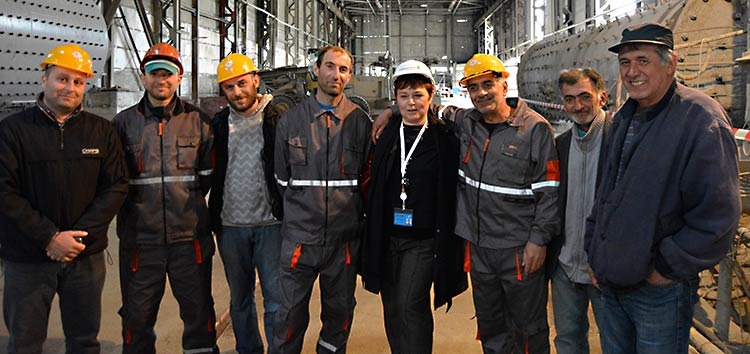An EBRD credit line for energy efficiency is helping reduce carbon footprint in the Caucasus.
Innovation in industry always requires significant investment. But new technologies also permit better energy efficiency.
Cement producer Georgian Building Group (GBG) embraced this strategy with the help of the EBRD’s sustainable energy financing facility Energocredit, a credit line worth US$ 125 million supported by theEuropean Union’s Neighbourhood Investment Facility (NIF) and Austria.
GBG is a sizeable player in Georgia’s construction and development business sector.
The company acts as a contractor to developers and supplies them with quality cement, of which the GBG plant produces about 250,000 tons each year.
However, cement production is an energy-intensive industry, responsible for 5 per cent of global CO2emissions. It is estimated that on average, each year, three tons of concrete are consumed by every person on the planet.
The topic of energy is very sensitive in Georgia. With frequent power cuts paralysing the country during early post-Soviet times, the country’s current focus on energy security and on the enormous potential of hydropower is hardly surprising.
The approach is complemented by a rising culture of energy saving in the private sector and beyond.
“The EBRD strongly supports this trend, said Remon Zakaria, Principal Business Development Manager in the EBRD Energy Efficiency team. “By providing credit lines and technical assistance through local banks across the Caucasus totalling US$ 125 million, a financing programme like Energocredit encourages companies and private households to identify, prioritize and finance sustainable energy investments.”
As part of the credit line service, GBG was able to identify opportunities to save energy and cut production costs with an energy audit which resulted in a clear investment plan.
The company used the Energocredit loan obtained through Bank of Georgia to implement the proposed measures, including the rehabilitation of the plant located in Avjala, the upgrade of the cement mill with new engines and the installation of energy efficient equipment such as air compressors.
“The improved mill will cut energy consumption by 40 per cent, thus leading to 2,240 tonnes of CO2emissions less every year, explained Andro Bibileishvili, President and COO of Kavkaz Cement, part of GBG. “The upgrade will also reduce the amount of raw materials used and improve production output and quality control.”
Additionally, with EU NIF funding, the company benefitted from an incentive payment of 15 per cent of the loan amount for the successful completion of the project.
Bank of Georgia also benefits from the credit line by increasing its expertise in energy efficiency investments. It has now become the leading bank for dedicated sustainable energy lending products to corporate clients.
This is just one example of the way the EBRD promotes and invests in sustainable energy in its countries of operations. With 34 per cent of the Bank’s €8.9 billion investments in 2014 dedicated to climate finance, the EBRD is a market leader in engaging the private sector in energy efficiency and renewable energy projects.
The EBRD has a great role to play in helping achieve global climate goals and is gearing up for the COP21Paris Climate Change Conference. The Bank will remain committed to supporting the talk’s outcomes in the countries where it invests and beyond.


